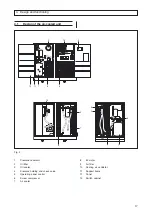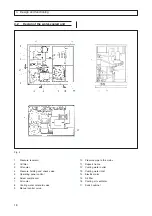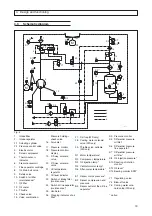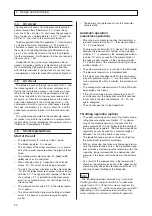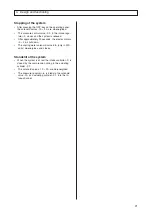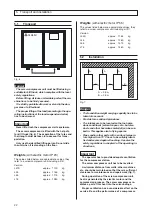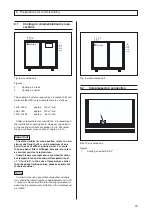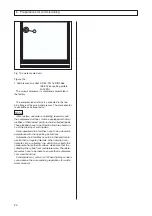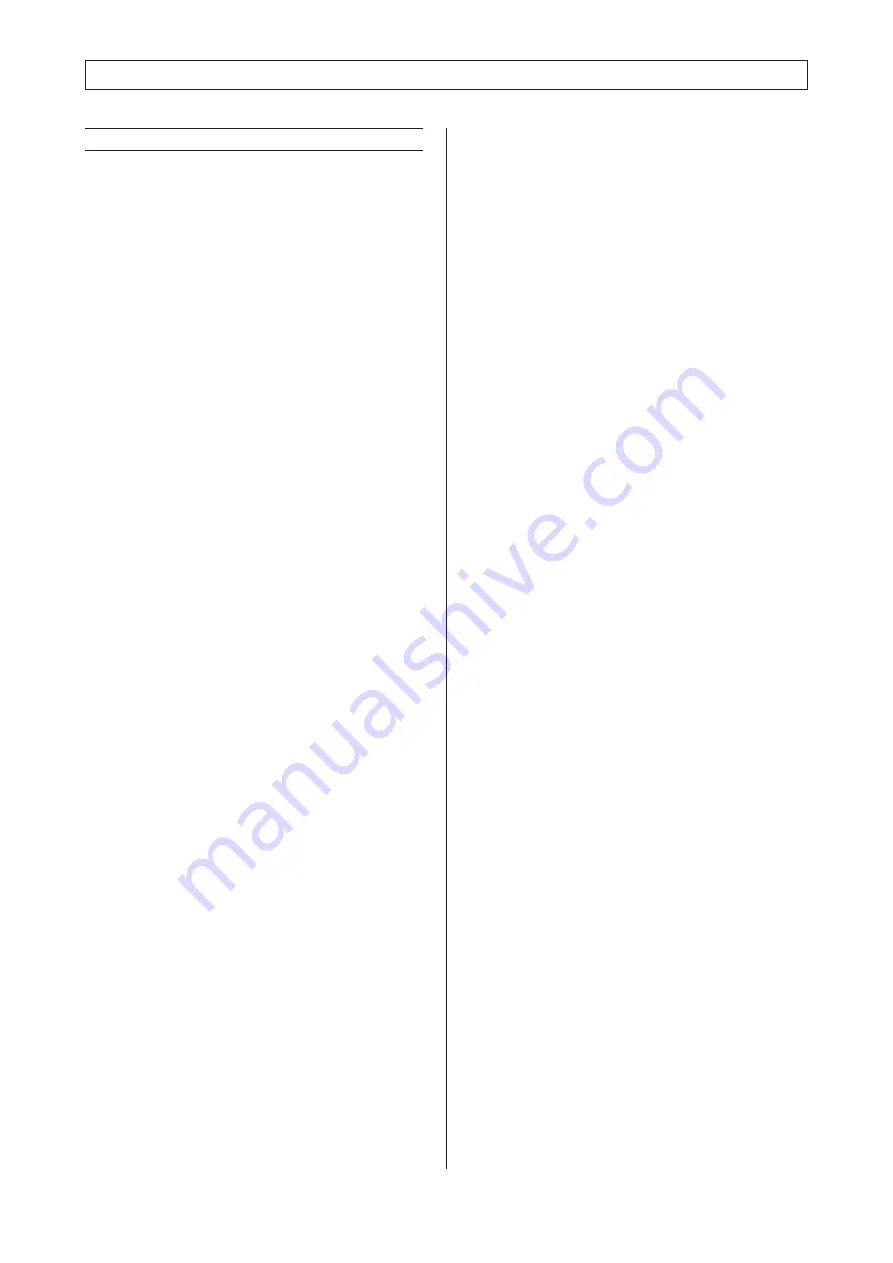
9
3. Safety regulations
3.5
Special work/maintenance
Carefulness
Observe the adjusting, maintenance and inspection
activities and intervals set out in the operating instruc-
tions, including information on the replacement of parts
and equipment. These activities may be carried out by
skilled personnel only.
Brief the operating personnel prior to starting special
operations or maintenance work ! Appoint a person to
supervise the activities !
Maintenance and repair work may only be carried out
under the supervision of a person who is qualified for
this work.
Oil losses result in a slippery floor. Therefore, always
clean the floor and the outside of the machine prior to
starting the maintenance work.
Checks, maintenance and repair work may only be
carried out with the screw compressor being at rest and
depressurized. Protective equipment to be removed for
this work, has to be refitted after completion of these ac-
tivities. Operation of the machine without protective
equipment is not permitted. When working on a running
screw compressor system, working clothes have to be
close-fitting.
If the machine/unit is completely shut down for
maintenance and repair work, it must be secured
against inadvertent restarting :
• Lock the main command elements and remove the
key and/or
• attach a warning sign to the main switch.
Always use the correct tools for maintenance and re-
pair work.
Never use inflammable solvents or carbon tetrachlori-
de to clean parts. Take precautions against poisonous
vapours from cleaning agents.
In any work concerning the operation, conversion or
adjustment of the machine and its safety-oriented de-
vices or any work related to maintenance, inspection
and repair, always observe the start-up and shutdown
procedures set out in the operating instructions and the
information on maintenance work.
Ensure that the maintenance area is adequately se-
cured.
To lower the risk of accidents, individual parts and lar-
ge assemblies being moved for replacement purposes
should be carefully attached to lifting tackle and secu-
red. Use only suitable and technically correct lifting
gear and only utilize suspension systems with adequa-
te lifting capacity. Never work or stand under suspen-
ded loads !
During maintenance and when carrying out repair
work, cleanliness is very important. Avoid the ingress of
dirt by covering parts and free openings with a clean
cloth, paper or adhesive tape.
After the completion of each repair, check that tooling
or loose parts have not been left in the machine, drive
motor or drive equipment and ensure that no cloth has
been left inside these units.
Be careful when the screw compressor system is in
operation.
Maintenance/rectification of faults
The employer has to inform the employee of the dan-
gers possibly arising during the repair and mainte-
nance of the machine/unit as well as on how to avoid
them; the employee has to observe all measures for
safety at work. Safety equipment for the prevention or
elimination of danger has to be maintained regularly
and functionally checked at least once a year. Faults
observed have to be immediately rectified and/or repor-
ted to the responsible person.
Use only original spare parts.
Only carry out maintenance and repair work when the
system is not in operation and the power supply dis-
connected. Ensure that the power unit cannot be swit-
ched on inadvertently.
Before removing or opening pressurized components,
positively isolate any source of pressure and depressu-
rize the entire system.
Never weld near oil systems or carry out any other
work requiring heat. Pressure reservoirs or compon-
ents and pipes containing oil have to be drained com-
pletely and cleaned, for example by means of a steam
jet, before beginning such work.
Never weld any pressure reservoir or change it in any
way.
If work which produces heat, flames or sparks has to
be carried out on a machine, the adjacent components
have to be protected by means of non inflammable ma-
terial.
Before releasing the power unit for operation after
maintenance or overhaul, check that the operating
pressures, temperatures and time settings are correct
and that the regulating and shut-down equipment
function properly.
Examine the pressure tube and the pressure vibration
dampers for carbon deposits every six months. Exces-
sive deposits have to be removed.
Motor, air filter, electrical components and regulating
equipment have to protected from the ingress of humi-
dity, e.g. when cleaning the system by means of a
steam jet.
Under no circumstance must the sound-proofing ma-
terial be removed or modified.
Never use etching solvents which could attack the
materials used.
If indicated or if there is any suspicion that an internal
part of the machine has run hot, the machine has to be
shut down.
In order to avoid an increase in the operating tempe-
rature, check and clean the heat transfer surfaces (coo-
ling fins, intermediate cooler, water cooling jackets,
etc.) at regular intervals. Prepare a plan of the most fa-
vourable cleaning intervals for each machine.
Avoid damage to the safety valves and other pressure
reducing components. Check in particular for clogging
caused by paint, oil carbon or the accumulation of dust,
which could deteriorate the effectiveness of these com-
ponents.
Insulation or protective shielding, the temperature of
which may exceed 70 °C and which could be errone-

















